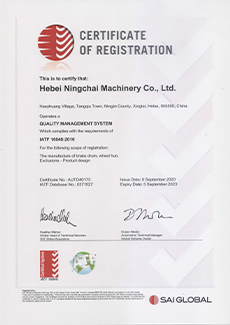
-
 Afrikaans
Afrikaans -
 Albanian
Albanian -
 Amharic
Amharic -
 Arabic
Arabic -
 Armenian
Armenian -
 Azerbaijani
Azerbaijani -
 Basque
Basque -
 Belarusian
Belarusian -
 Bengali
Bengali -
 Bosnian
Bosnian -
 Bulgarian
Bulgarian -
 Catalan
Catalan -
 Cebuano
Cebuano -
 Corsican
Corsican -
 Croatian
Croatian -
 Czech
Czech -
 Danish
Danish -
 Dutch
Dutch -
 English
English -
 Esperanto
Esperanto -
 Estonian
Estonian -
 Finnish
Finnish -
 French
French -
 Frisian
Frisian -
 Galician
Galician -
 Georgian
Georgian -
 German
German -
 Greek
Greek -
 Gujarati
Gujarati -
 Haitian Creole
Haitian Creole -
 hausa
hausa -
 hawaiian
hawaiian -
 Hebrew
Hebrew -
 Hindi
Hindi -
 Miao
Miao -
 Hungarian
Hungarian -
 Icelandic
Icelandic -
 igbo
igbo -
 Indonesian
Indonesian -
 irish
irish -
 Italian
Italian -
 Japanese
Japanese -
 Javanese
Javanese -
 Kannada
Kannada -
 kazakh
kazakh -
 Khmer
Khmer -
 Rwandese
Rwandese -
 Korean
Korean -
 Kurdish
Kurdish -
 Kyrgyz
Kyrgyz -
 Lao
Lao -
 Latin
Latin -
 Latvian
Latvian -
 Lithuanian
Lithuanian -
 Luxembourgish
Luxembourgish -
 Macedonian
Macedonian -
 Malgashi
Malgashi -
 Malay
Malay -
 Malayalam
Malayalam -
 Maltese
Maltese -
 Maori
Maori -
 Marathi
Marathi -
 Mongolian
Mongolian -
 Myanmar
Myanmar -
 Nepali
Nepali -
 Norwegian
Norwegian -
 Norwegian
Norwegian -
 Occitan
Occitan -
 Pashto
Pashto -
 Persian
Persian -
 Polish
Polish -
 Portuguese
Portuguese -
 Punjabi
Punjabi -
 Romanian
Romanian -
 Russian
Russian -
 Samoan
Samoan -
 Scottish Gaelic
Scottish Gaelic -
 Serbian
Serbian -
 Sesotho
Sesotho -
 Shona
Shona -
 Sindhi
Sindhi -
 Sinhala
Sinhala -
 Slovak
Slovak -
 Slovenian
Slovenian -
 Somali
Somali -
 Spanish
Spanish -
 Sundanese
Sundanese -
 Swahili
Swahili -
 Swedish
Swedish -
 Tagalog
Tagalog -
 Tajik
Tajik -
 Tamil
Tamil -
 Tatar
Tatar -
 Telugu
Telugu -
 Thai
Thai -
 Turkish
Turkish -
 Turkmen
Turkmen -
 Ukrainian
Ukrainian -
 Urdu
Urdu -
 Uighur
Uighur -
 Uzbek
Uzbek -
 Vietnamese
Vietnamese -
 Welsh
Welsh -
 Bantu
Bantu -
 Yiddish
Yiddish -
 Yoruba
Yoruba -
 Zulu
Zulu
Cost Analysis for Replacing Brake Drums and Shoes in Vehicles
Brake Drum and Shoe Replacement Cost A Comprehensive Overview
When it comes to vehicle maintenance, understanding the costs associated with brake drum and shoe replacement is essential for car owners. Reliable brakes are crucial for safety, and eventually, components such as brake drums and shoes will wear out over time, necessitating replacement. This article will delve into the factors influencing the cost of brake drum and shoe replacement, the average prices involved, and tips to save money during the process.
Understanding Brake Drums and Shoes
Brake drums are circular metal containers that house brake shoes, which press against the drum to create friction and, consequently, stop the vehicle. Over time, both components can wear down, leading to diminished braking performance. Signs that your brake drums and shoes may need replacing include squeaking sounds, decreased stopping power, or vibrations during braking.
Factors Influencing Replacement Costs
The costs of replacing brake drums and shoes can vary significantly based on several factors
1. Vehicle Make and Model Different vehicles have varying brake systems, which can affect the parts' cost. Luxury and imported cars typically have higher replacement costs due to more expensive parts and specialized labor.
2. Labor Costs The cost of labor can vary substantially depending on the mechanic's experience, the shop's location, and whether the service is performed at a dealership or an independent garage. Dealerships often charge higher labor rates compared to independent mechanics.
3. Replacement Parts The price of brake drums and shoes can differ based on the quality of the parts. While OEM (Original Equipment Manufacturer) parts may cost more, they often provide better performance and longevity compared to cheaper aftermarket alternatives.
4. Region and Location Prices can differ based on geographical location. Urban areas may have higher prices for both parts and labor compared to rural regions.
brake drum and shoe replacement cost

Average Costs
On average, the total cost for replacing brake drums and shoes can range between $300 to $800. Specifically, the brake shoes' cost typically falls between $50 and $150 per axle, while brake drums may range from $100 to $300 each. Labor charges can add another $100 to $200 to the total bill.
Tips for Saving Money on Brake Replacement
1. Regular Inspections Preventive maintenance can save a lot of money in the long run. Regular brake inspections can help identify issues before they require more extensive repairs.
2. Shop Around Don’t settle for the first quote you receive. Compare prices from different mechanics to find the best deal.
3. Consider DIY For those with mechanical skills, replacing brake drums and shoes can be a straightforward task. However, ensure you have the right tools and follow safety protocols.
4. Look for Promotions Many auto repair shops offer promotions and discounts for brake services, especially during certain seasons.
5. Use Quality Parts While it might be tempting to opt for the cheapest parts available, investing in quality components can lead to better performance and reduced long-term costs.
Conclusion
Understanding the costs associated with brake drum and shoe replacement is crucial for every vehicle owner. By considering the influencing factors, average prices, and money-saving tips, you can make informed decisions about your vehicle's maintenance needs. Prioritizing brake health not only enhances your safety but also contributes to the longevity of your vehicle.
-
What Are Drum BrakesNewsJul.07,2025
-
Understanding Brake Drum MaterialNewsJul.07,2025
-
Semi-Trailer Brake Drum: A Key Component for Extreme Loads and Long-Distance TransportNewsJul.07,2025
-
Drum Brake Pads for SaleNewsJul.07,2025
-
Brake Drums for SaleNewsJul.07,2025
-
Brake Drum ManufacturerNewsJul.07,2025
-
Aluminum Brake Drums: The Future of High-Performance CarsNewsJul.07,2025
